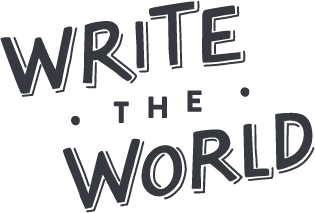
Every great story needs tension, the heartbeat that keeps readers turning pages. But what exactly creates that tension? Let’s break down the two ingredients that make any story worth reading: stakes and conflict. When you’re devising your story’s plot, take a moment to consider the “why” behind the narrative—the reason you’re telling this story, at this moment, and for this particular audience. Why is it worth readers’ time and attention? How do you hope to impact them? (e.g., to inspire, empower, move, provoke).
Almost always, this “why” has something to do with disequilibrium, meaning something in your character’s life is thrown off balance. They were cruising along when something happened to change the course of their life, typically some sort of trouble, conflict, or danger. And there is often a deeper message that you hope to communicate to readers about this particular form of conflict or change.
American short story writer Steve Almond describes plot as “the mechanism by which your protagonist is forced up against her deepest fears and/or desires.” Some examples: when Junior, an Indigenous-identifying teen, transfers to an all-white school in the novel The Absolutely True Diary of a Part-Time Indian, or Liesel’s experiences in the war-torn world of The Book Thief.
Stakes
If you’ve ever wondered what are stakes in writing, think of them as the reason readers care about your story’s outcome. Stakes give conflict its power—the sense that something meaningful is on the line. To figure out your story’s stakes, ask yourself: What does the character have to lose?
This tension and the reader caring about the outcome is what we mean by stakes.
Some other questions to help you get to the heart of your stakes:
- What does my character want most in the world?
- What are they most afraid of?
- Why should the reader care about the character?
Once you’ve identified what’s at stake for your character, the next question becomes: What’s getting in their way? That’s where conflict comes in.
Conflict
As you consider the stakes of your story and your main character’s dreams and anxieties, it’s useful to think about what’s standing in their way—a.k.a. the conflict! Understanding the different types of conflict in a story will help you decide what challenges to throw at your characters and how to make those struggles feel real.
Here are four different ways to think about conflict in relation to your character(s):
-
Physical Antagonist: This is a character who stands in the way of your main character achieving what they want. Sometimes, this is intentional (e.g., a bully intentionally making the main character’s life miserable at his new school), but oftentimes, the antagonist isn’t trying to be evil; it’s just that their own goals conflict with those of your main character.
-
Abstract Antagonist: Something non-human that stands in the way of your character achieving what they want—like a war, illness, or natural disaster.
-
External Conflict: The conflict that emerges between your main character and the antagonist. Consider, for instance, how Liesel, in The Book Thief, goes about stealing books in a war-torn world (e.g., the abstract antagonist). How does she keep from getting caught?
-
Internal Conflict: The fears, jealousies, anxieties, or other complex emotions that your character has to confront. This might look like a fear of public speaking, or self-doubt in the face of an important sporting event.
Whether your story’s conflict is external or internal, remember that readers connect most deeply when they understand what’s at risk — and why it matters. So, push your characters toward the edge, and let their struggles reveal the heart of your story.




